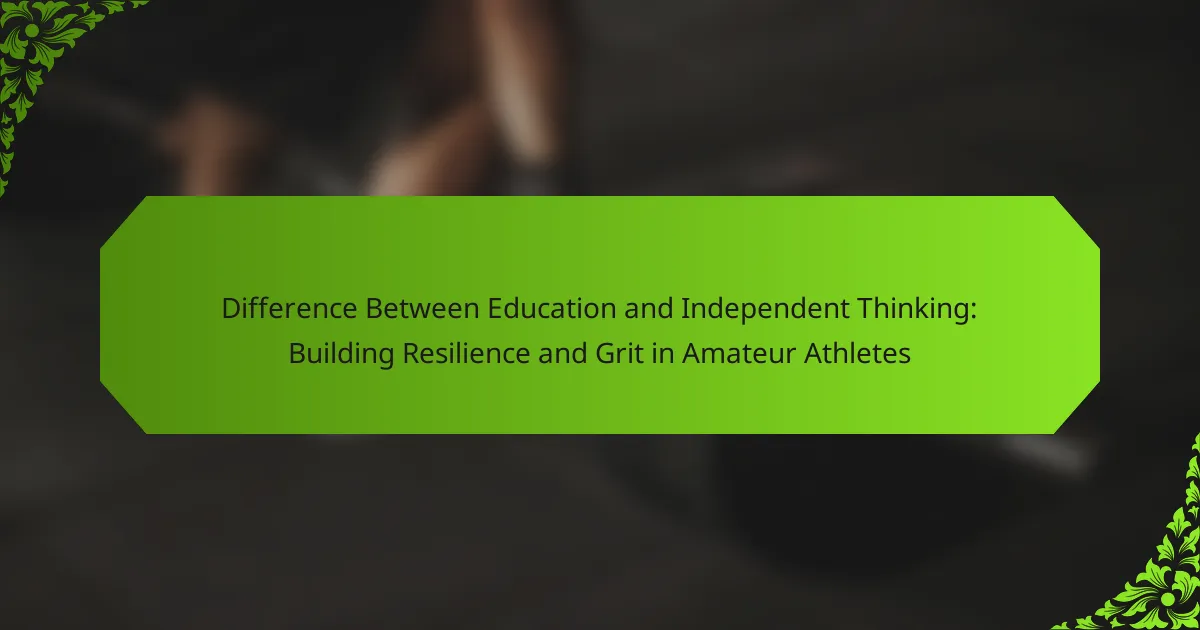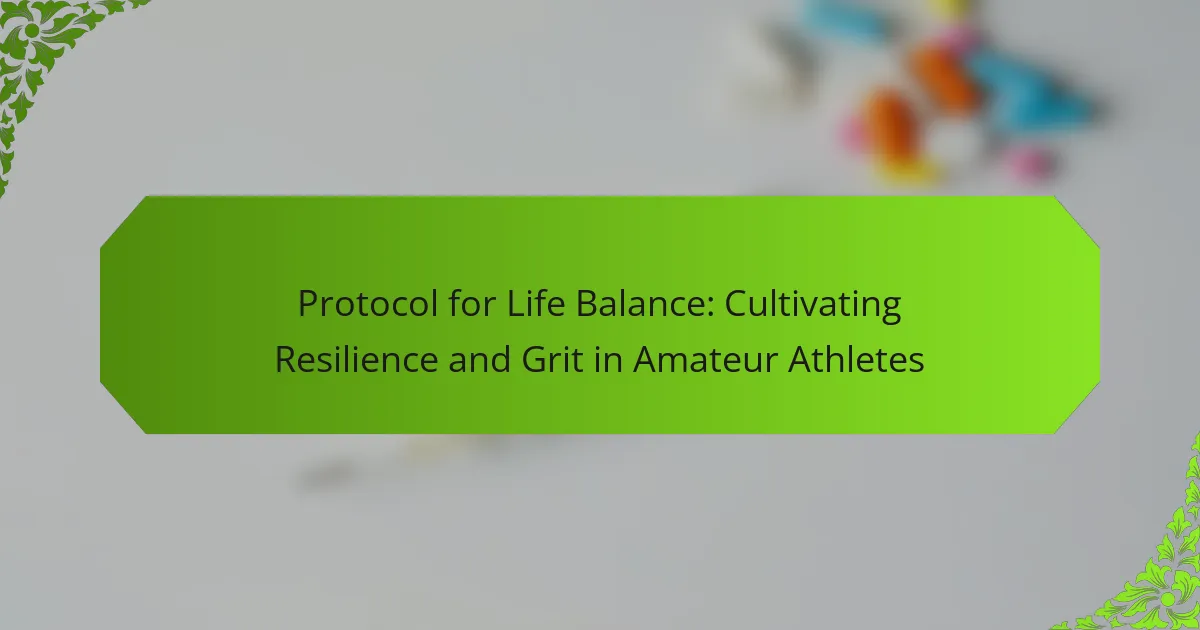Education plays a crucial role in developing independent thinking among amateur athletes, enhancing their resilience and grit. This article explores how education fosters critical analysis and problem-solving skills, promotes self-reflection, and builds adaptability. It also discusses actionable practices like goal-setting and visualization that improve mental toughness. Lastly, it highlights the importance of emotional intelligence and a strong sense of purpose in overcoming challenges in sports.
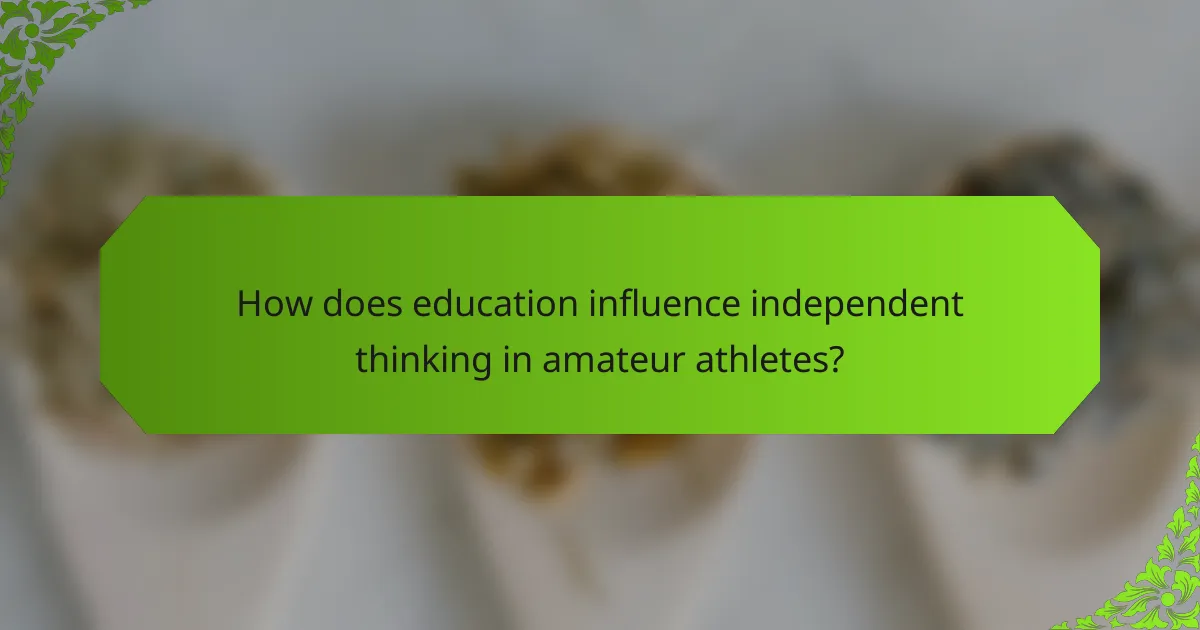
How does education influence independent thinking in amateur athletes?
Education significantly enhances independent thinking in amateur athletes by fostering critical analysis and problem-solving skills. This process builds resilience and grit, essential for overcoming challenges in sports. Research indicates that athletes who engage in educational pursuits develop a deeper understanding of strategies and self-management techniques. This unique attribute of education empowers athletes to make informed decisions during competitions, enhancing their performance. Furthermore, educational experiences promote self-reflection, allowing athletes to evaluate their strengths and weaknesses. As a result, they cultivate a mindset that embraces challenges, ultimately leading to greater success in both sports and life.
What role does critical thinking play in developing resilience?
Critical thinking enhances resilience by enabling amateur athletes to analyze challenges, adapt strategies, and maintain focus. It fosters problem-solving skills, allowing them to navigate setbacks effectively. This cognitive process empowers athletes to evaluate their emotions and reactions, leading to improved mental fortitude. As a result, athletes develop grit, essential for sustained performance and recovery in competitive environments.
How can independent thinking enhance grit in sports?
Independent thinking enhances grit in sports by fostering resilience and adaptability. Athletes who think independently can analyze situations, make informed decisions, and learn from failures. This process builds mental toughness, essential for overcoming challenges. Research shows that athletes with strong independent thinking skills demonstrate higher perseverance, leading to improved performance and success in competitive environments.
What are practical strategies for fostering critical thinking?
Encouraging critical thinking in amateur athletes involves practical strategies that enhance resilience and grit. Foster a growth mindset by promoting self-reflection and encouraging athletes to analyze their performance. Implement problem-solving exercises that require athletes to devise strategies during training. Create a supportive environment where questioning and exploration are valued, allowing athletes to learn from mistakes. Utilize peer feedback sessions to cultivate collaborative thinking and diverse perspectives.
How can athletes apply independent thinking to overcome challenges?
Athletes can apply independent thinking by analyzing challenges, generating solutions, and making decisions based on their unique experiences. This approach fosters resilience and grit, essential traits for overcoming obstacles in sports. By embracing self-directed learning, athletes enhance problem-solving skills, leading to improved performance. Independent thinking encourages adaptability, allowing athletes to respond effectively to unexpected situations. Ultimately, this mindset cultivates a deeper understanding of personal strengths and weaknesses, empowering athletes to navigate challenges with confidence.
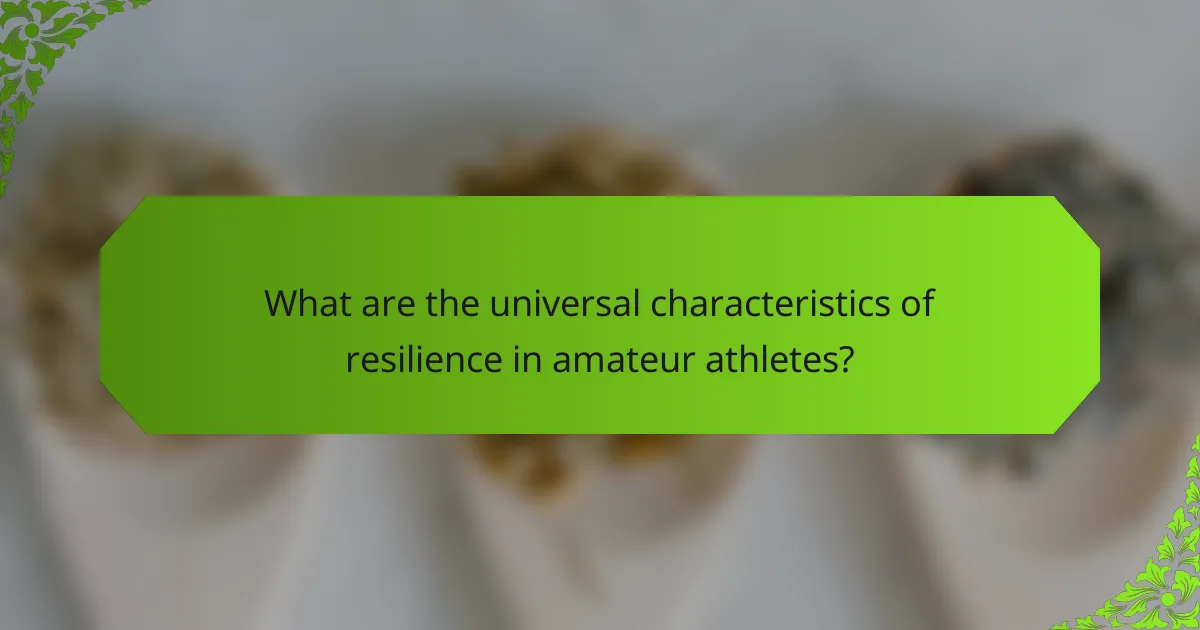
What are the universal characteristics of resilience in amateur athletes?
Resilience in amateur athletes is characterized by adaptability, perseverance, emotional regulation, and a growth mindset. These traits enable athletes to overcome challenges and maintain focus on their goals. Adaptability allows them to adjust strategies during competitions, while perseverance drives them to continue despite setbacks. Emotional regulation helps manage stress and anxiety, enhancing performance under pressure. A growth mindset fosters continuous learning and improvement, essential for long-term success. These universal characteristics collectively contribute to building resilience and grit in amateur athletes.
How does emotional regulation contribute to resilience?
Emotional regulation enhances resilience by enabling individuals to manage stress and adapt to challenges effectively. This skill fosters a positive mindset, allowing amateur athletes to maintain focus and motivation during setbacks. Research shows that athletes with strong emotional regulation are more likely to exhibit grit, which is crucial for long-term success in sports. By learning to control their emotions, athletes can improve performance and develop a robust mental framework for overcoming obstacles.
What are the benefits of a growth mindset for amateur athletes?
A growth mindset offers significant benefits for amateur athletes, enhancing their resilience and grit. It fosters a love for learning, encouraging athletes to embrace challenges and persist through setbacks. This mindset promotes self-improvement, allowing athletes to view failures as opportunities for growth. As a result, they develop stronger mental toughness and adaptability, crucial for long-term success in sports. Additionally, athletes with a growth mindset are more likely to seek feedback and learn from it, which further accelerates their development and performance.
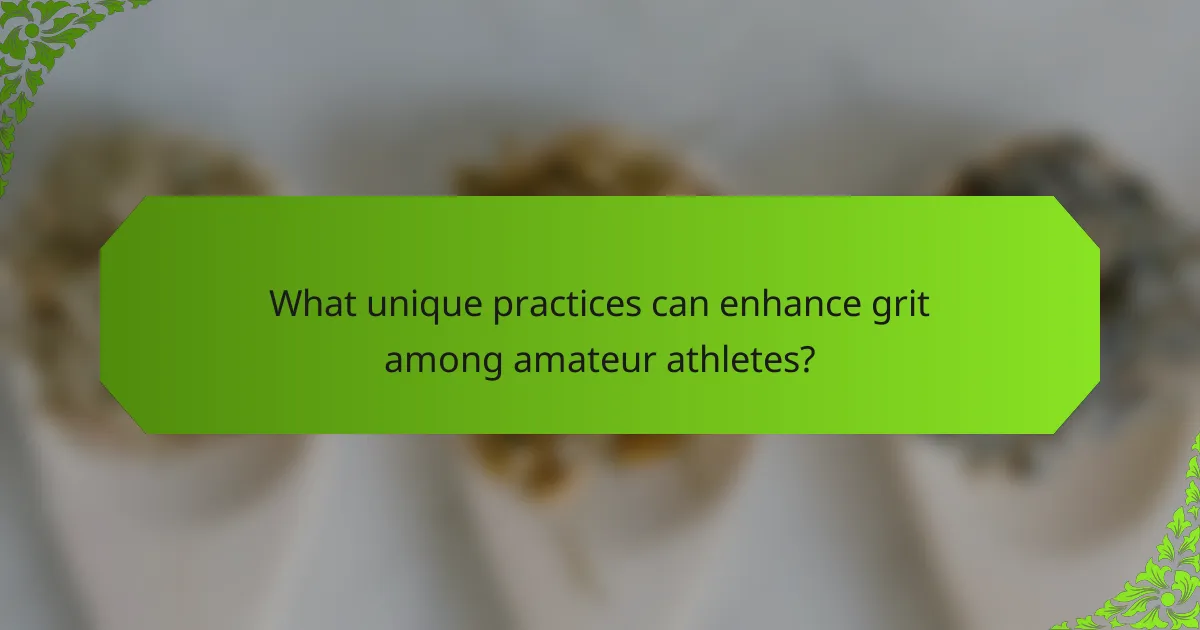
What unique practices can enhance grit among amateur athletes?
Amateur athletes can enhance grit through unique practices that foster resilience. Incorporating goal-setting, visualization techniques, and reflective journaling can significantly improve mental toughness.
Goal-setting helps athletes define clear, achievable objectives, providing motivation and direction. Visualization techniques allow athletes to mentally rehearse success, reinforcing a positive mindset. Reflective journaling encourages self-assessment, promoting awareness of progress and areas for improvement.
Additionally, incorporating challenges, such as tackling difficult workouts or competing against stronger opponents, builds resilience. Engaging in team activities fosters a support system, enhancing emotional strength. These practices collectively contribute to developing grit in amateur athletes.
How can goal-setting techniques improve perseverance?
Goal-setting techniques enhance perseverance by providing clear objectives and measurable milestones. These techniques foster resilience in amateur athletes, encouraging them to persist through challenges. By breaking larger goals into smaller, achievable tasks, athletes can maintain motivation and track progress. This structured approach develops grit, as individuals learn to navigate setbacks and remain focused on their long-term aspirations. Research indicates that specific, challenging goals can lead to higher performance levels, reinforcing the importance of goal-setting in cultivating perseverance.
What role does visualization play in building grit?
Visualization significantly enhances grit by fostering mental resilience in amateur athletes. It allows individuals to mentally rehearse challenges, reinforcing their commitment and perseverance. This technique cultivates a strong mindset, enabling athletes to overcome obstacles and maintain focus on their goals. Regular visualization practices can lead to measurable improvements in performance and emotional endurance, ultimately contributing to the development of grit.
How can athletes create effective visualization routines?
Athletes can create effective visualization routines by establishing a consistent practice schedule, focusing on specific goals, and incorporating sensory details. Consistency enhances familiarity and effectiveness. Setting clear, measurable objectives helps direct the visualization process. Engaging multiple senses during visualization, such as sight and sound, makes the experience more vivid and impactful.
What are the impacts of mentorship on developing resilience?
Mentorship significantly enhances resilience in amateur athletes by providing guidance and support. Mentors instill confidence, helping athletes navigate challenges effectively. This relationship fosters grit, encouraging perseverance despite setbacks. Studies show that athletes with mentors exhibit improved coping strategies and emotional regulation, leading to better performance under pressure.

What rare attributes contribute to exceptional resilience in athletes?
Exceptional resilience in athletes is often influenced by rare attributes such as adaptability, emotional intelligence, and a strong sense of purpose. Adaptability allows athletes to adjust to challenges and setbacks effectively. Emotional intelligence helps in managing stress and maintaining motivation. A strong sense of purpose drives commitment and perseverance, essential for overcoming obstacles in training and competition. These attributes contribute to a unique mental framework that fosters resilience, setting exceptional athletes apart from their peers.
How does adaptability shape an athlete’s resilience?
Adaptability significantly enhances an athlete’s resilience by fostering mental flexibility and problem-solving skills. Athletes who embrace change can better navigate challenges and setbacks, ultimately leading to improved performance. Research indicates that adaptable athletes demonstrate higher levels of grit, allowing them to persist through adversity. This adaptability is a unique attribute that distinguishes successful athletes in competitive environments. By cultivating a mindset that values learning from experiences, athletes build a robust foundation for resilience.
What are the signs of advanced grit in amateur athletes?
Amateur athletes exhibit advanced grit through persistence, adaptability, and a strong commitment to their training. They face challenges with resilience, maintain focus on long-term goals, and demonstrate a willingness to learn from failures. These signs reflect their ability to overcome obstacles and stay dedicated to improvement.
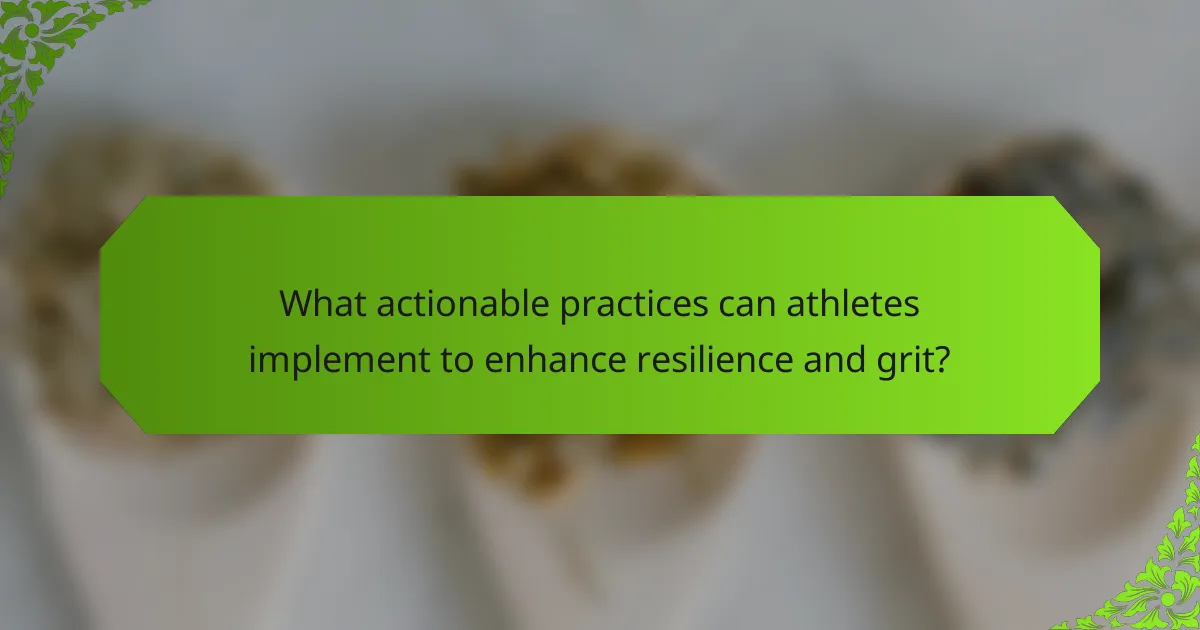
What actionable practices can athletes implement to enhance resilience and grit?
Athletes can enhance resilience and grit by adopting specific actionable practices. These include setting clear goals, maintaining a positive mindset, embracing challenges, practicing mindfulness, and fostering a support network.
Setting clear goals helps athletes focus their efforts and measure progress. A positive mindset encourages perseverance despite setbacks. Embracing challenges builds confidence and adaptability. Mindfulness practices enhance emotional regulation and stress management. Finally, a supportive network provides encouragement and accountability.
Implementing these strategies fosters a growth mindset, essential for developing resilience and grit in amateur athletes.
What common mistakes should athletes avoid in their resilience-building journey?
Athletes should avoid common mistakes like neglecting mental training, setting unrealistic goals, and failing to learn from setbacks. Prioritizing physical training over mental resilience can hinder progress. Unrealistic goals can lead to frustration and burnout. Learning from setbacks fosters growth and adaptability.
How can athletes optimize their training for mental toughness?
Athletes can optimize training for mental toughness by integrating educational strategies that promote resilience and grit. Fostering independent thinking through problem-solving exercises enhances decision-making under pressure. Techniques such as visualization and mindfulness can significantly improve focus and emotional regulation. Regularly challenging oneself in varied training scenarios develops adaptability, a unique attribute essential for mental toughness. Engaging in reflective practices after training sessions helps athletes understand their mental barriers, leading to sustained improvement.
What expert insights can guide athletes in developing grit and resilience?
Expert insights emphasize the importance of education in fostering grit and resilience among amateur athletes. Developing a growth mindset is crucial; athletes should view challenges as opportunities for learning. Setting specific, achievable goals enhances motivation and perseverance. Regular reflection on experiences helps athletes identify strengths and areas for improvement. Supportive coaching and mentorship play a vital role in building resilience by providing guidance and encouragement. Emphasizing teamwork fosters a sense of community, which can enhance individual grit. Lastly, incorporating mental training techniques, such as visualization and mindfulness, can significantly improve an athlete’s ability to cope with adversity.
